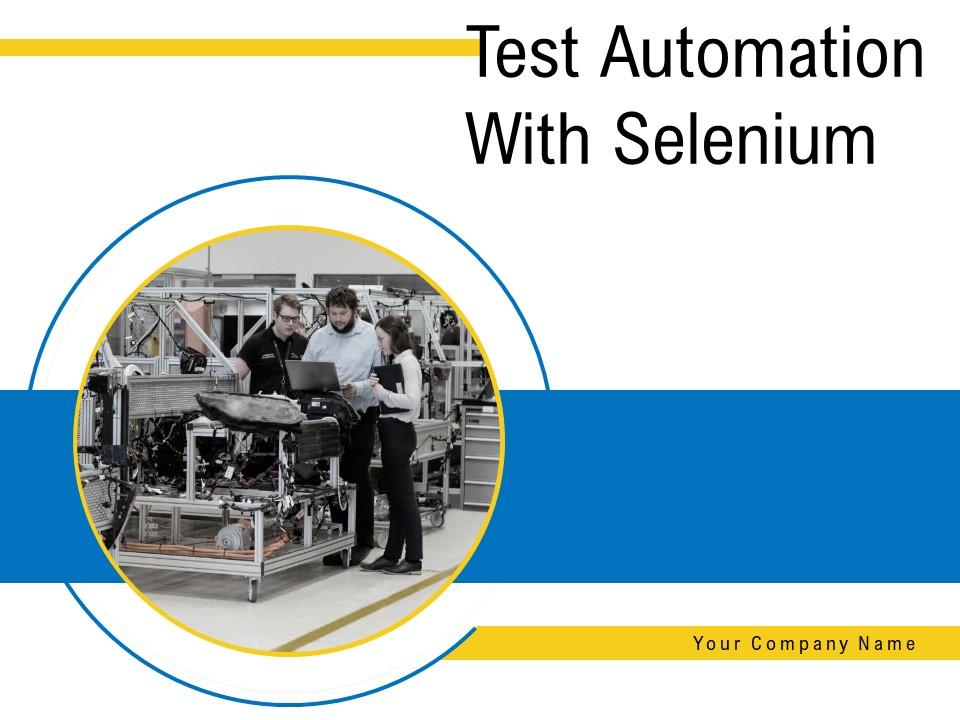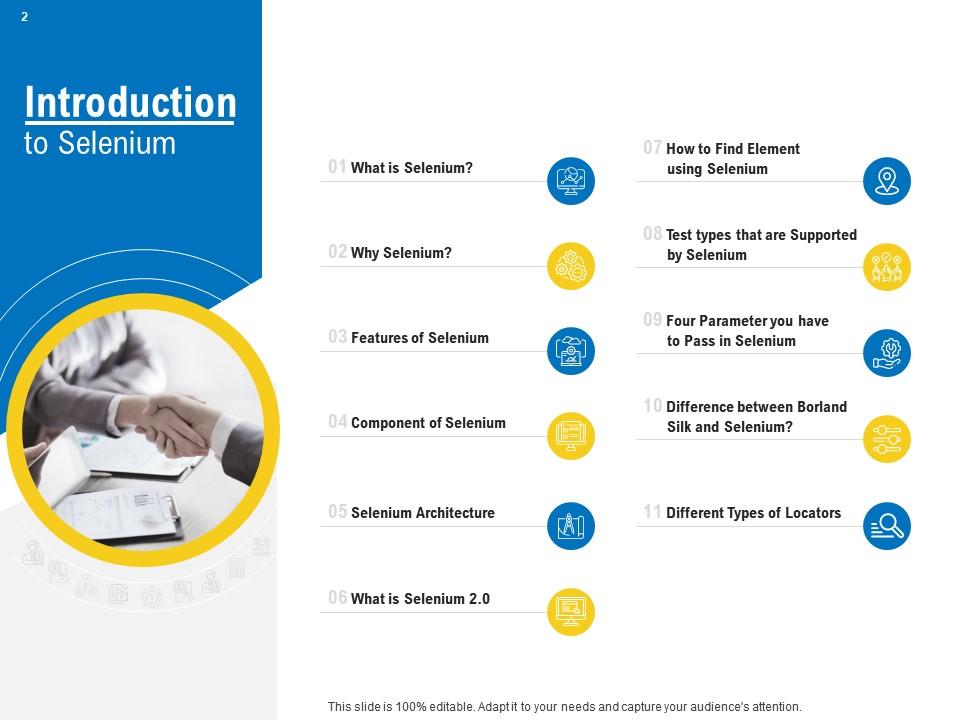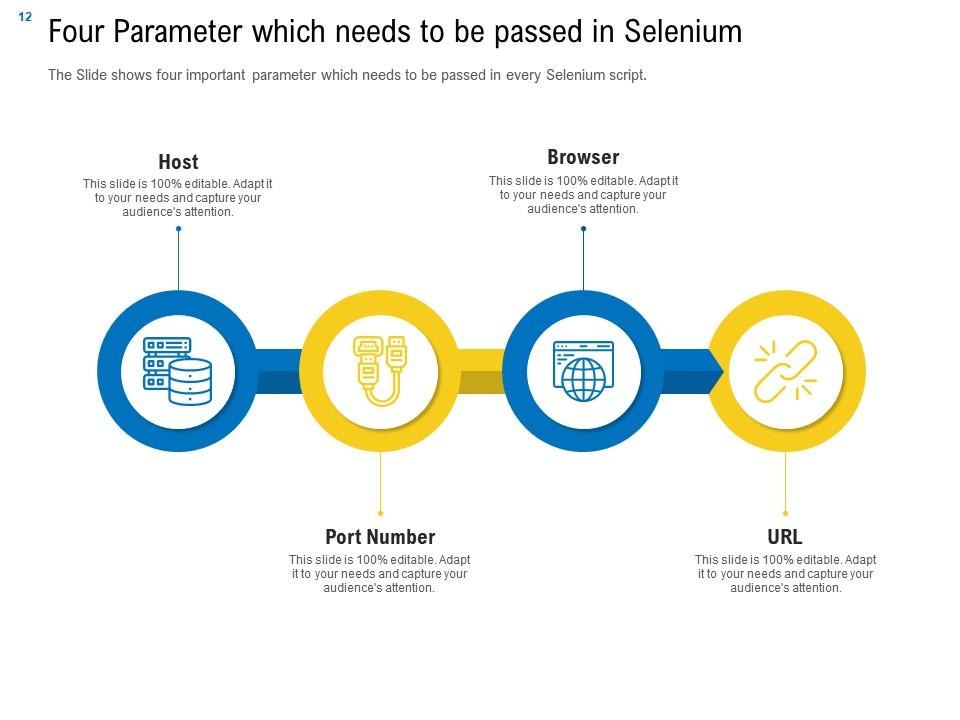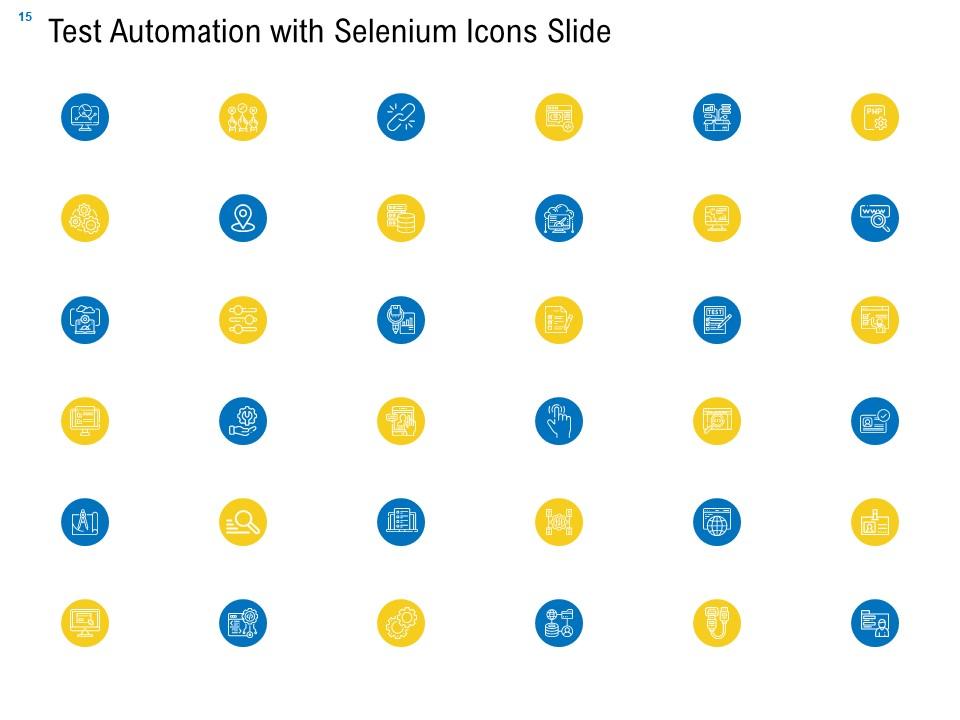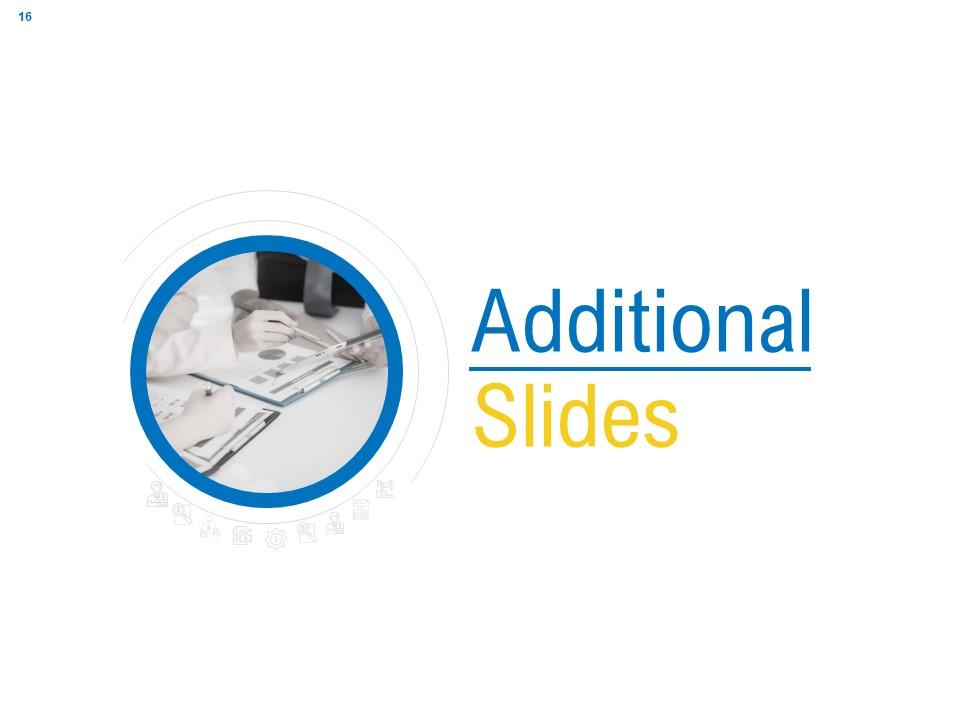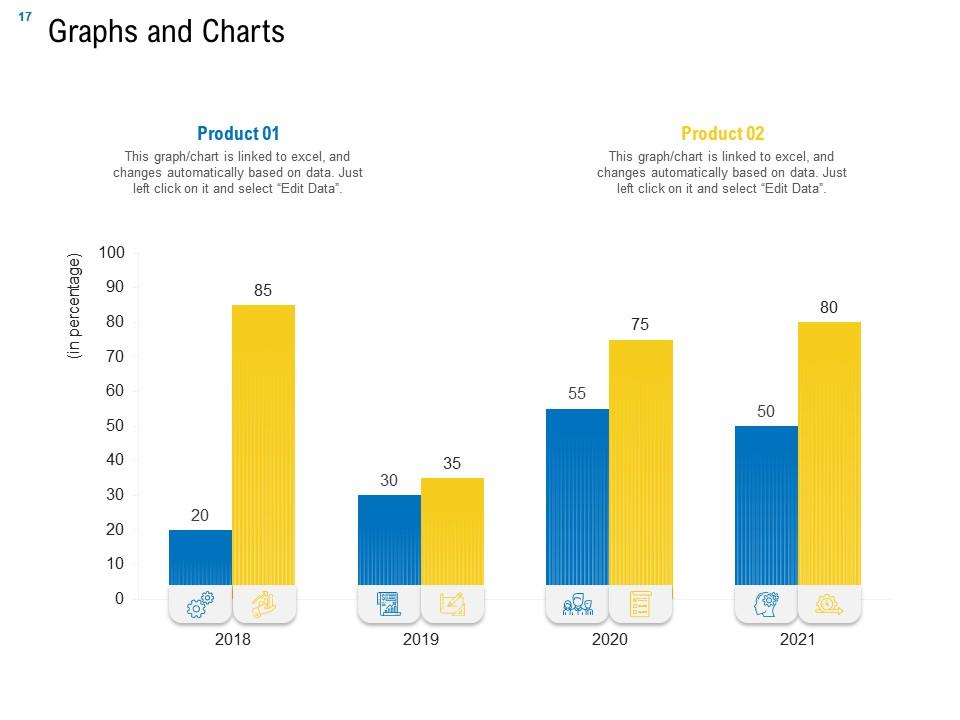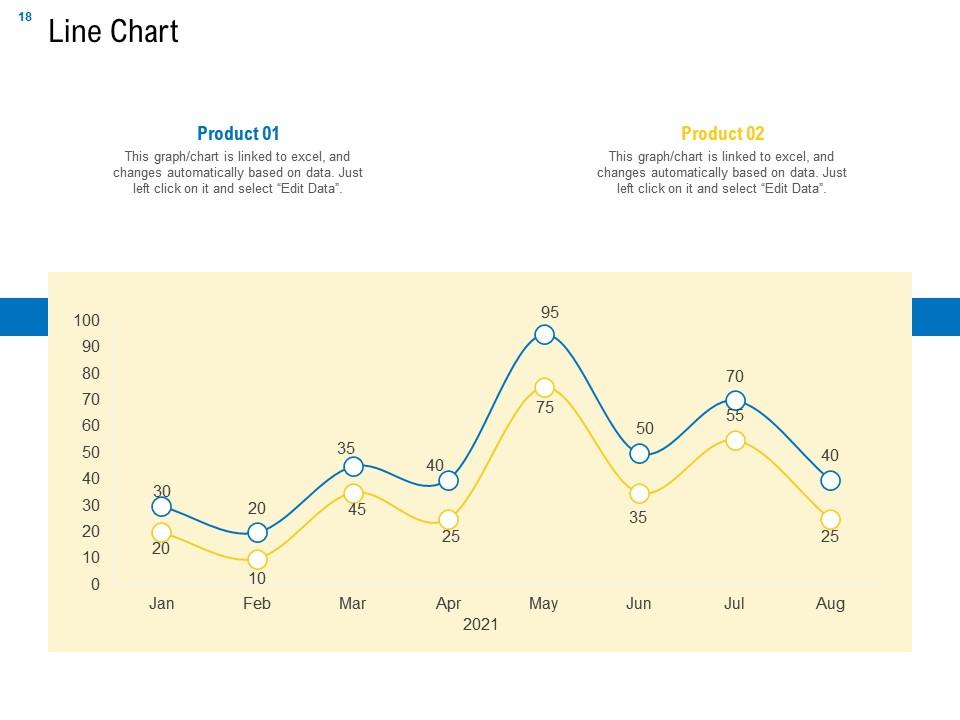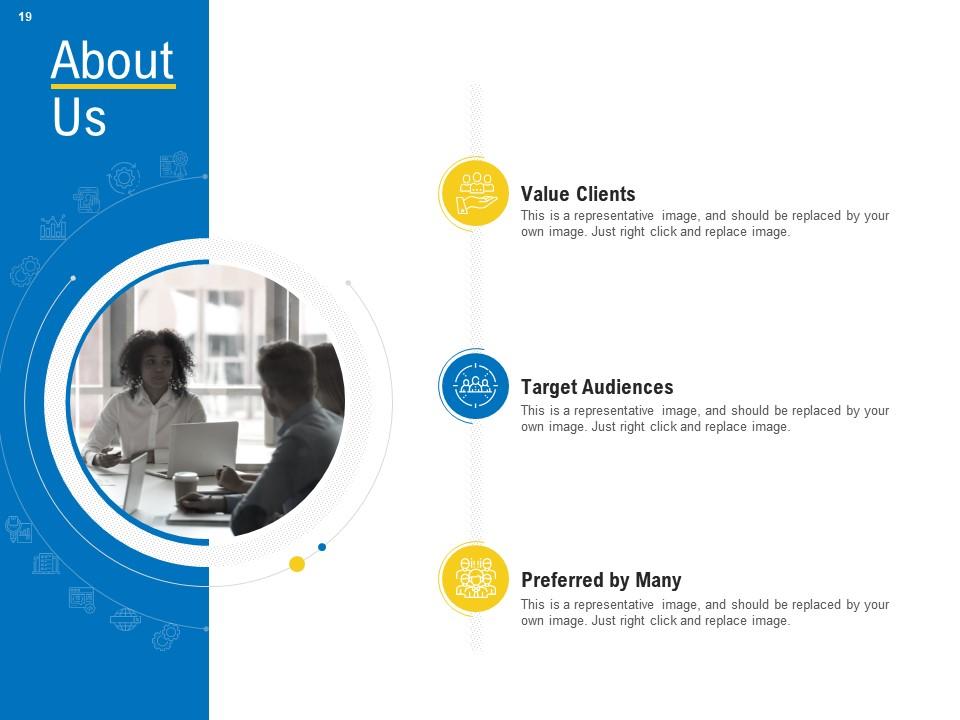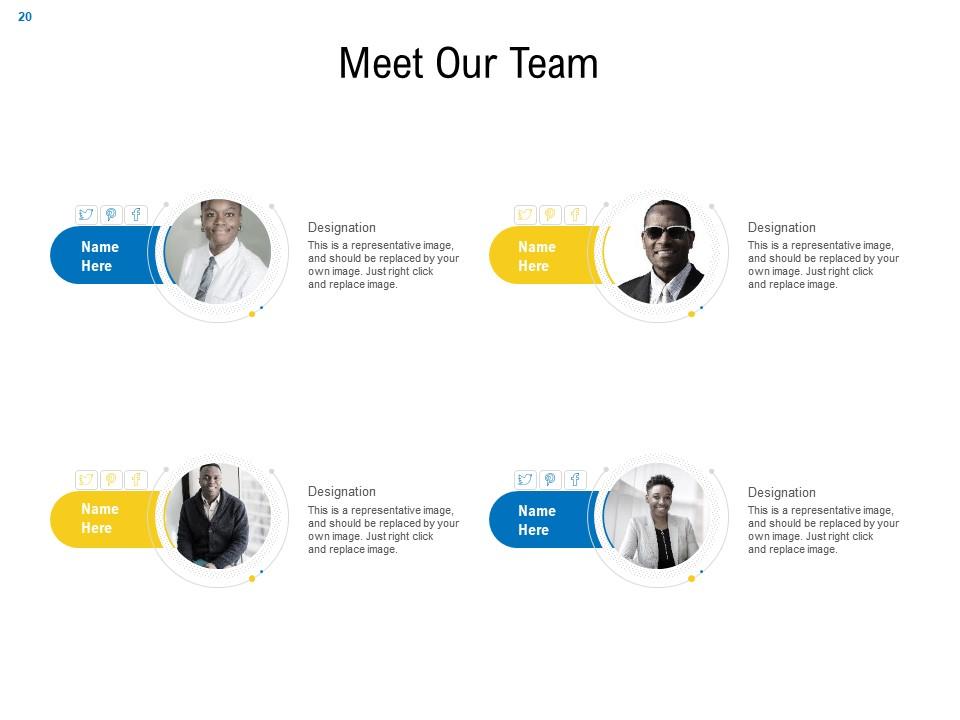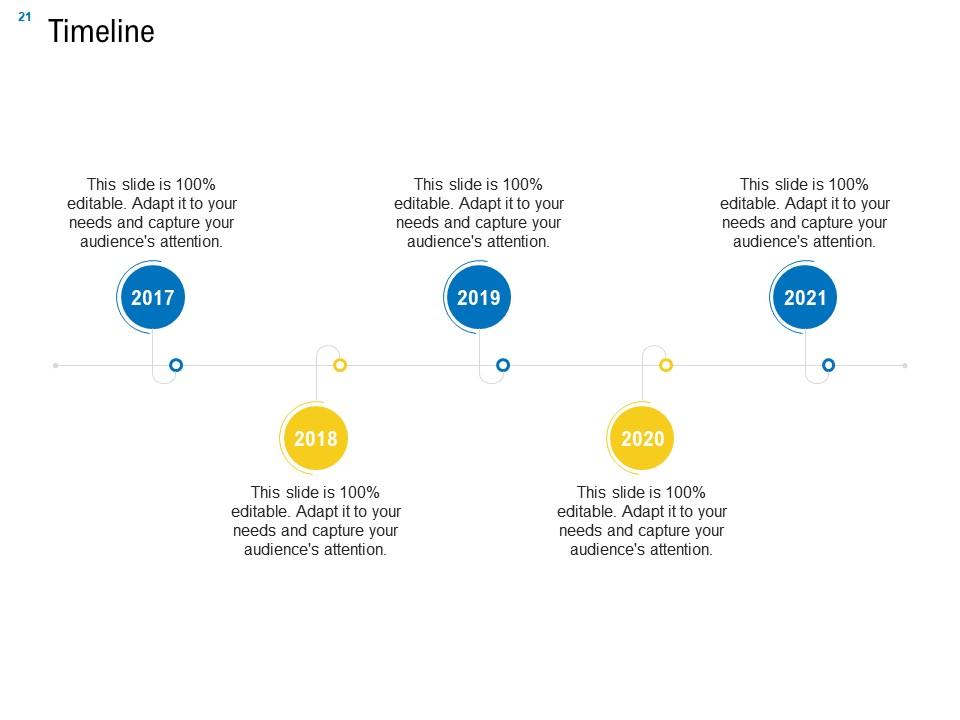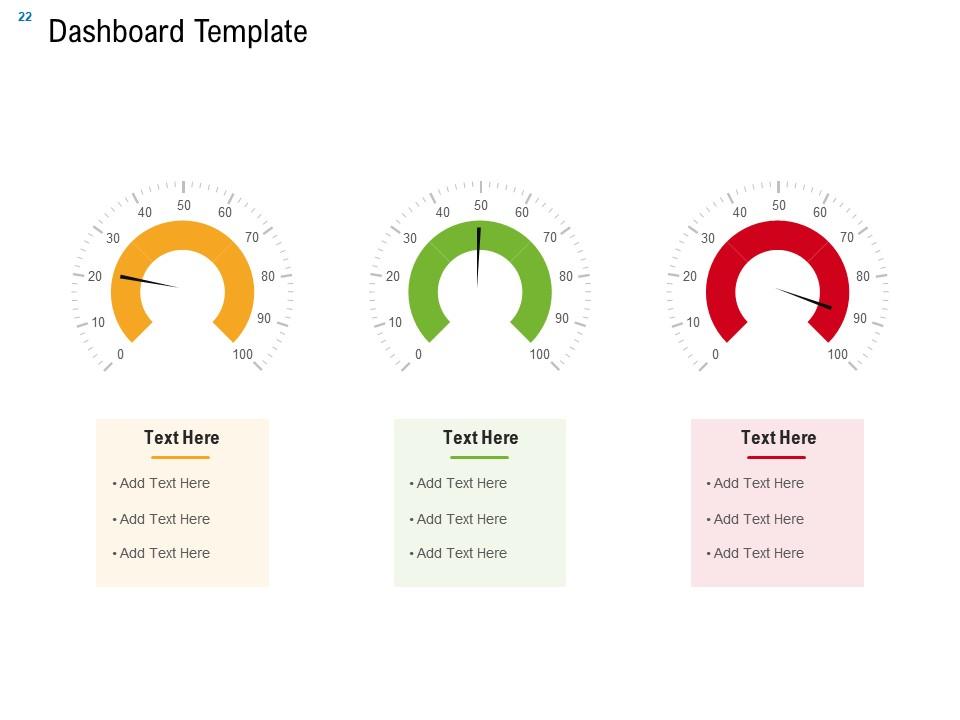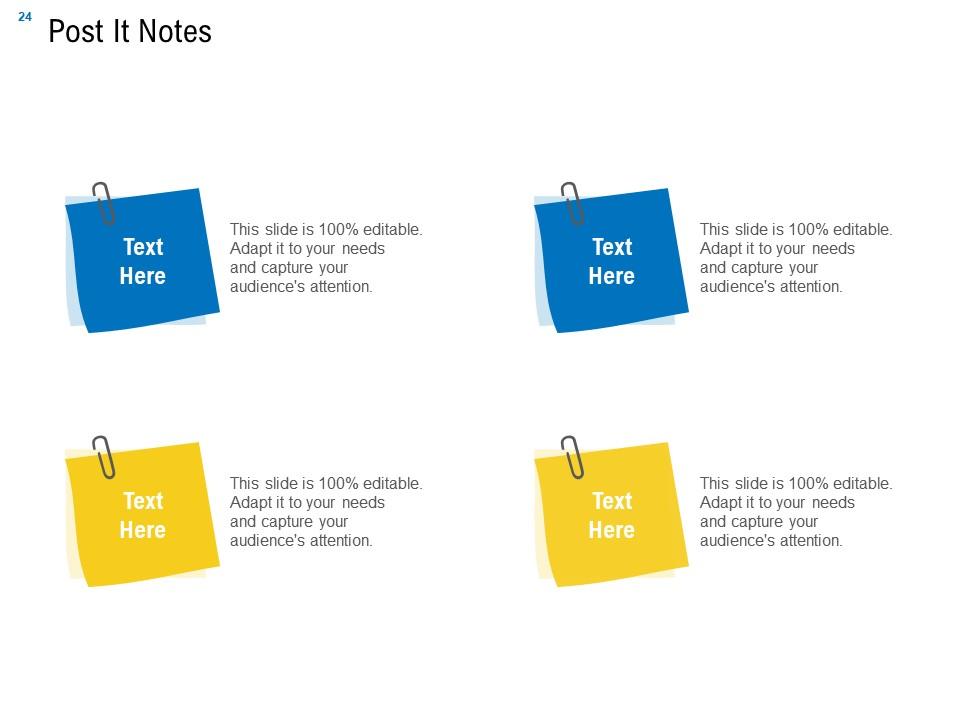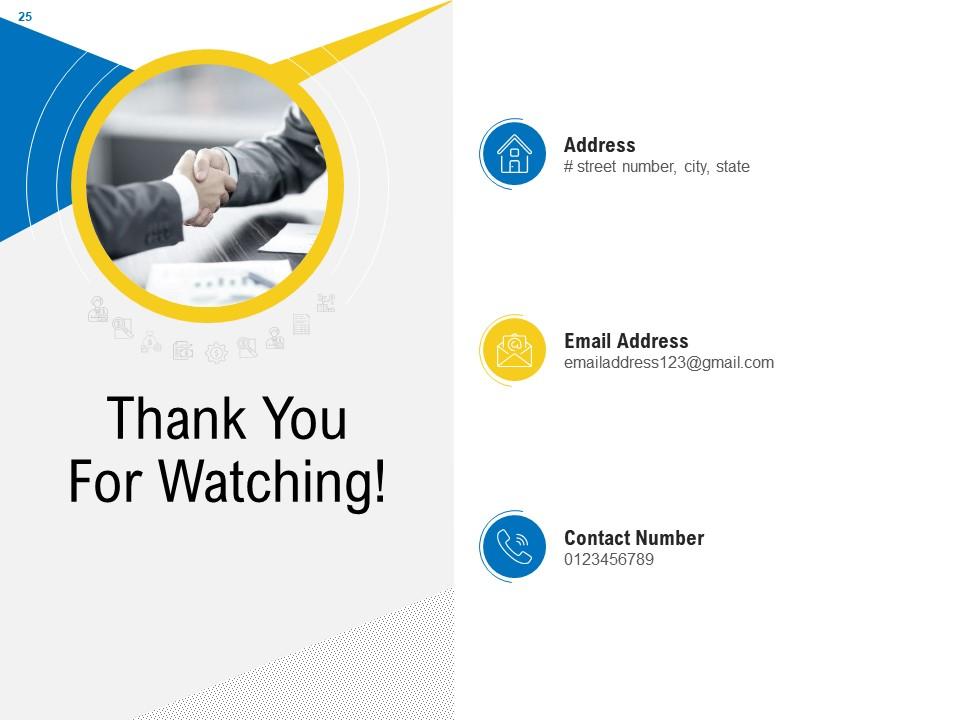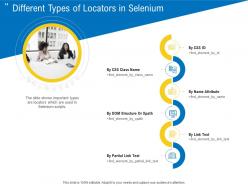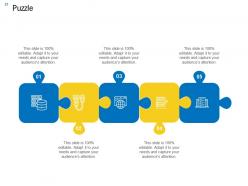Test automation with selenium powerpoint presentation slides
Our Test Automation With Selenium Powerpoint Presentation Slides are topically designed to provide an attractive backdrop to any subject. Use them to look like a presentation pro.
- Google Slides is a new FREE Presentation software from Google.
- All our content is 100% compatible with Google Slides.
- Just download our designs, and upload them to Google Slides and they will work automatically.
- Amaze your audience with SlideTeam and Google Slides.
-
Want Changes to This PPT Slide? Check out our Presentation Design Services
- WideScreen Aspect ratio is becoming a very popular format. When you download this product, the downloaded ZIP will contain this product in both standard and widescreen format.
-

- Some older products that we have may only be in standard format, but they can easily be converted to widescreen.
- To do this, please open the SlideTeam product in Powerpoint, and go to
- Design ( On the top bar) -> Page Setup -> and select "On-screen Show (16:9)” in the drop down for "Slides Sized for".
- The slide or theme will change to widescreen, and all graphics will adjust automatically. You can similarly convert our content to any other desired screen aspect ratio.
Compatible With Google Slides

Get This In WideScreen
You must be logged in to download this presentation.
PowerPoint presentation slides
It covers all the important concepts and has relevant templates which cater to your business needs. This complete deck has PPT slides on Test Automation With Selenium Powerpoint Presentation Slides with well suited graphics and subject driven content. This deck consists of total of twenty five slides. All templates are completely editable for your convenience. You can change the colour, text and font size of these slides. You can add or delete the content as per your requirement. Get access to this professionally designed complete deck presentation by clicking the download button below.
People who downloaded this PowerPoint presentation also viewed the following :
Content of this Powerpoint Presentation
Do you dedicate countless hours to meticulously testing a website, navigating through different pages, filling out forms, and searching for potential errors? It's a repetitive process that demands your undivided attention, and it can be quite laborious and prone to mistakes!
Not anymore. Selenium test automation can be your savior! Test automation with Selenium is similar to having a virtual assistant that can effortlessly execute actions on web browsers - it's akin to instructing a machine on how to test websites!
Now conveying all this incredible information using our PowerPoint slides that elucidate what Selenium is, how it works, and the programming languages it supports. This could serve as your comprehensive guide to understanding Selenium and its vast capabilities!
Our presentation can showcase Selenium test automation software's advantages, including time savings and error reduction.
Let's get on a journey together as we explore the slides and discover the endless possibilities of Selenium test automation!
Don't forget to lookout our slide on Introduction Selenium and its Components to know more.
Template 1 - What is Selenium
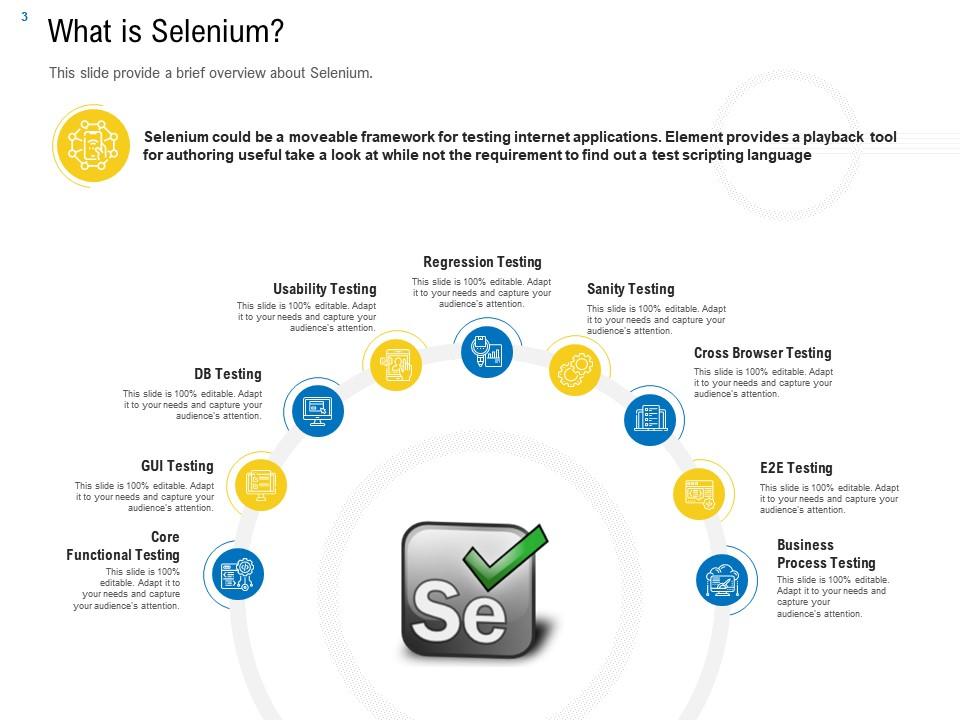
Use this PPT Template to understand the introductory mechanics of Selenium, a test automation technology, of immense use to industry and business. The slide goes deep into its extensive testing capabilities, which include regression testing, sanity testing, cross-browser testing, database (DB) testing, GUI (graphical user interface) testing, core functional testing (EFT), end-to-end (E2E), and usability testing. Selenium can also be deployed to find out if the data contained in databases is correct, as well as the usability (GUI testing) of software interfaces, providing increased automation during software testing operations. Overall, this template demonstrates Selenium's ability to automate numerous elements of software testing using automated approaches.
Template 2- Why Selenium
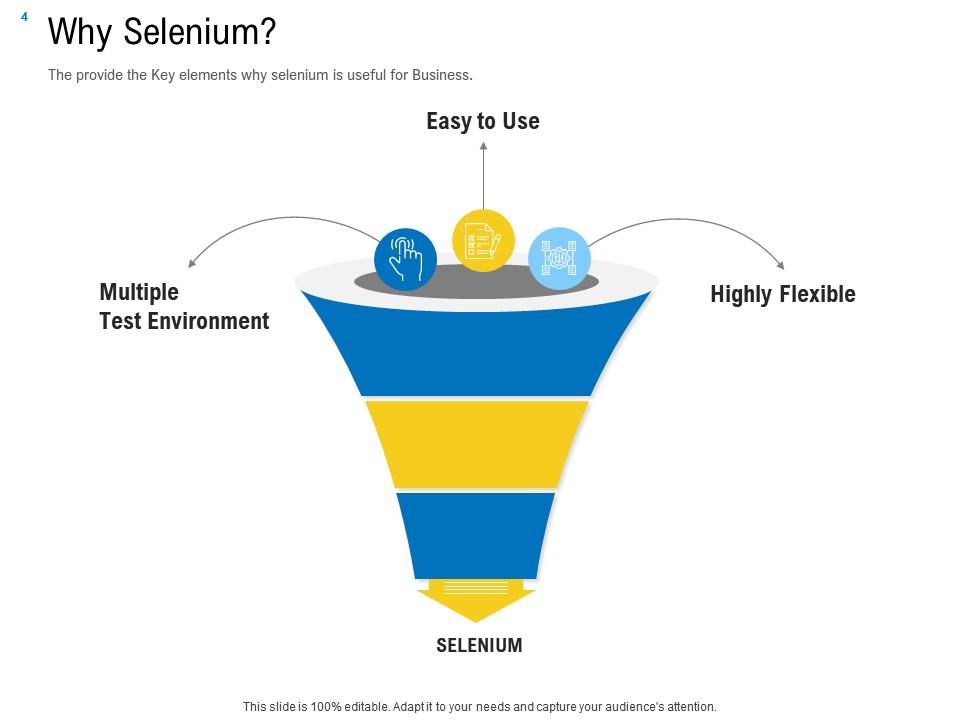
This template emphasizes Selenium's many benefits in test automation. Selenium stands out for its ease of use, allowing testers with a variety of technical backgrounds to use it. Selenium stands out as a helpful solution because of its extensive support for many programming languages and smooth interaction with various testing frameworks and tools. Selenium provides exceptional flexibility, allowing testers to customize automation tactics to particular project requirements while effortlessly integrating Selenium into current processes.
Template 3- Features of Selenium
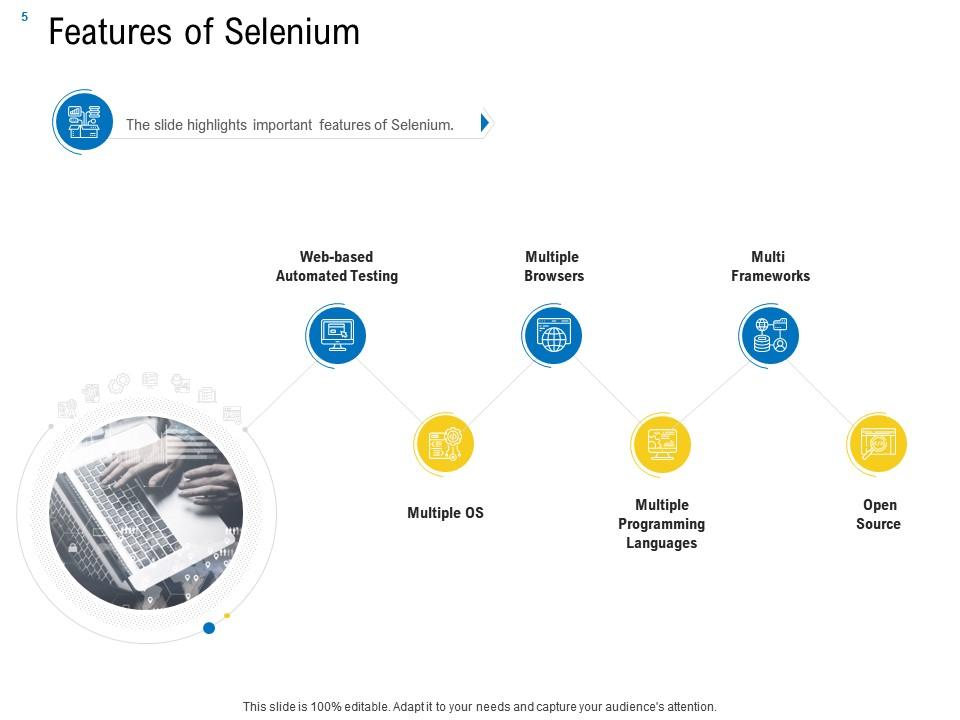
Before businesses take to Selenium in an even greater way, it is critical for top management to know the benefits and features that make it an excellent test automation solution. The slide illustrates how Selenium's capability for web-based automated testing allows testers to verify functionality inside online applications. Selenium's interoperability with browsers makes it a perfect fit for extensive testing across platforms and assures consistent performance across diverse online environments. Furthermore, its support for many frameworks allows for greater flexibility in test design and execution. Selenium supports many operating systems and programming languages, enabling testers to choose their favorite one when writing tests. All of these aspects contribute to Selenium's popularity and efficiency in automating testing operations.
Template 4 - Component of Selenium
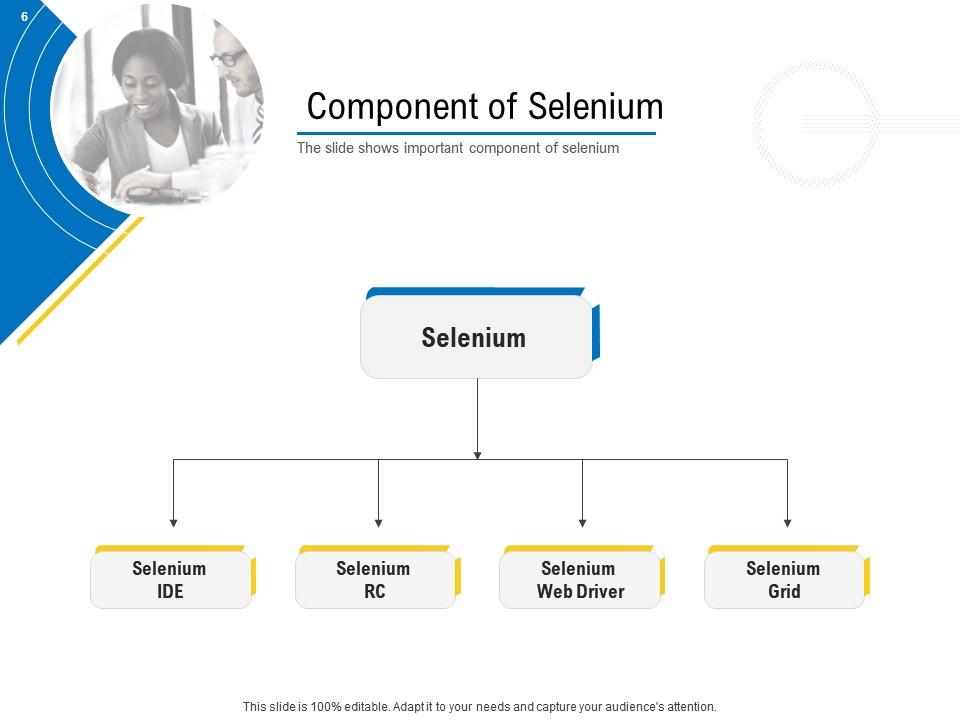
This template depicts all of the main pieces that make up Selenium, a sophisticated test automation framework. Selenium IDE (Integrated Development Environment) is an easy-to-use platform for recording and playing back test scripts. Selenium RC (Remote Control) allows testers to write automated tests in a variety of computer languages and execute them across many browsers. Selenium WebDriver is a powerful tool for automating web application testing with more flexibility. Selenium Grid enables parallel test execution over several workstations and browsers. It also provides testers with a compelling suite that enables them to automate web testing activities efficiently regardless of skill level or project needs.
Get an insight into our slide on Difference between Selenium 1 vs selenium 2 vs selenium 3 to know the differences in detail.
Template 5- Selenium Web Driver Architecture
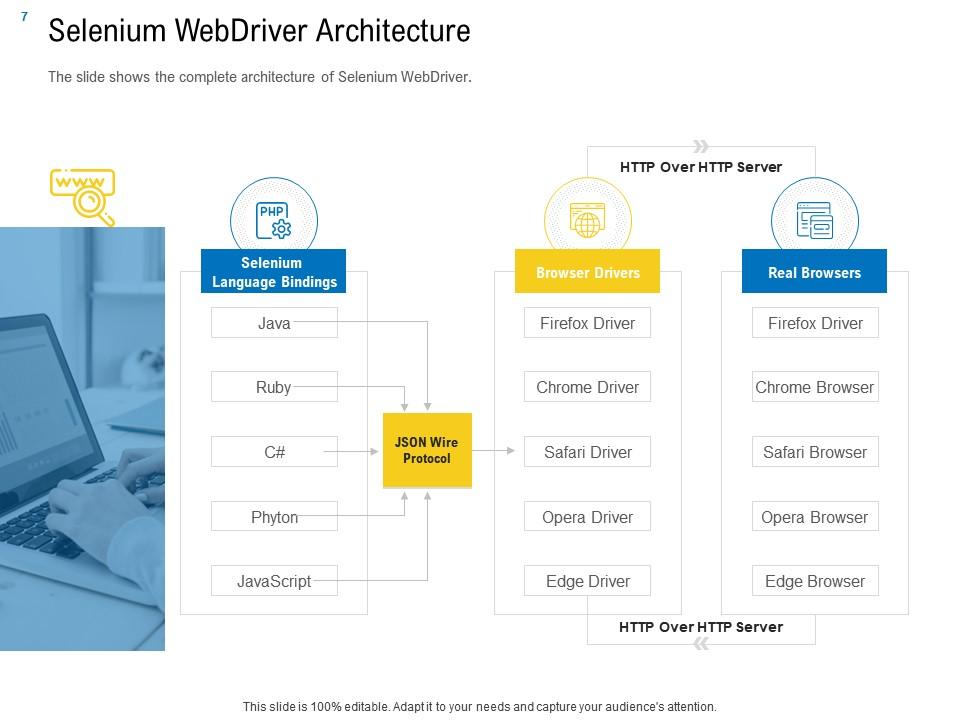
First and foremost, this PPT Template underscores the importance of Selenium language bindings. These are akin to libraries that allow testers to access Selenium in their favoured computer programming languages, such as Java, Python, or C#, rather than writing test code in Selenium, first-hand. Importantly, the slide recognizes the role of browser drivers, which are short programs that link Selenium WebDriver to Chrome, Firefox, and Safari. Selenium WebDriver uses actual browsers in testing. This means testers can simulate genuine user interactions with web applications, resulting in far more accurate and consistent test results.
Template 6 - What is Selenium 2.0
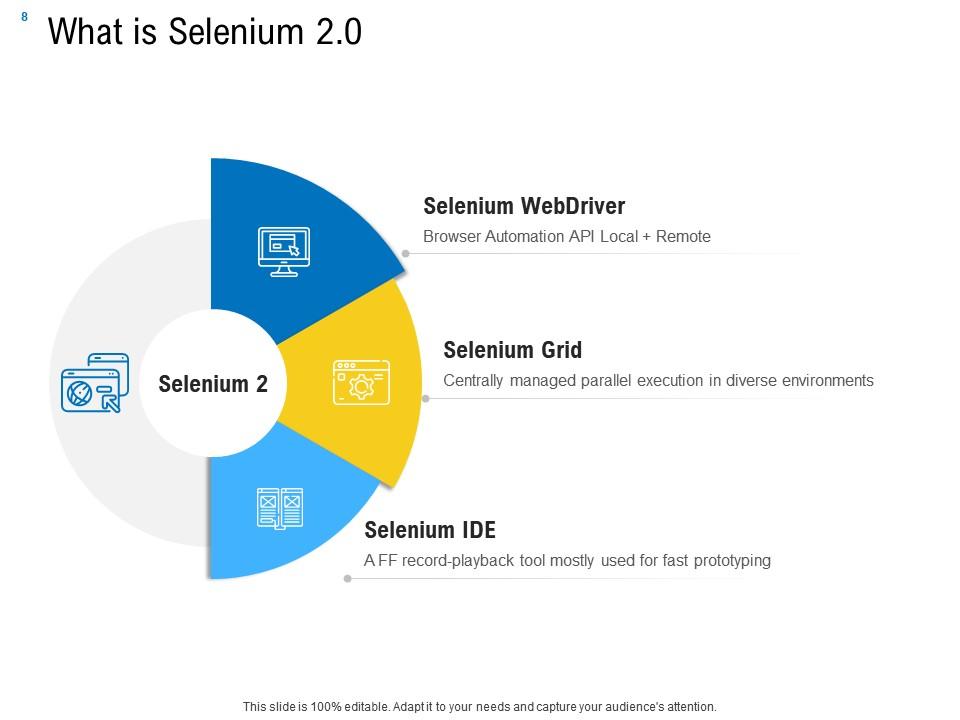
This template presents the newest version of the Selenium automation framework, which includes new capabilities and refinements. Selenium WebDriver, a sophisticated tool for automating online testing activities that outperform its predecessor Selenium RC, enables testers to interact directly with web components, providing more control and flexibility during test automation. Selenium 2.0 offers four components that allow tests to be executed in parallel across several computers and browsers, hence increasing testing efficiency. Selenium Grid allows for simultaneous test execution over several computers and browsers, while Selenium IDE provides a user-friendly interface for recording and playing back test scripts for novices.
Template 7- Difference Between Selenium 1 vs Selenium 2 vs Selenium 3
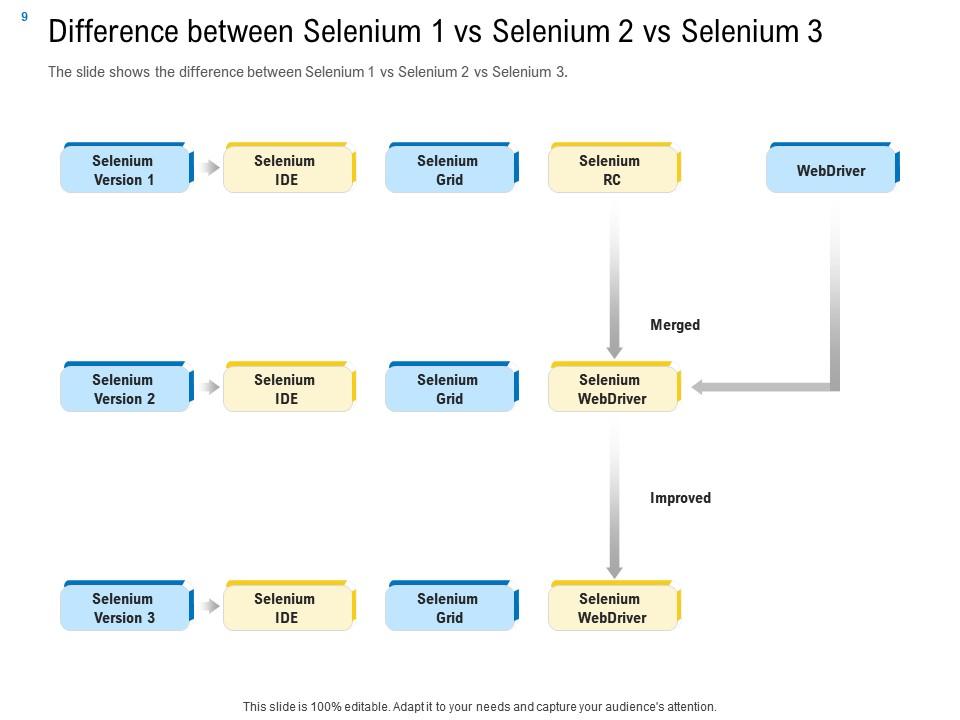
This template depicts the advancement in Selenium with the first version, being christened Selenium 1. Then, its major components were WebDriver, Grid, and IDE. Selenium versions 2 and 3 underwent component rearrangement; although Selenium IDE and Selenium Grid remained, Selenium WebDriver received more focus. With Selenium 3, Selenium WebDriver became a tool to automate web testing, giving more capability and flexibility than Selenium RC. This also created more efficient and powerful online testing capabilities.
Template 8- How to Find Elements Using Selenium
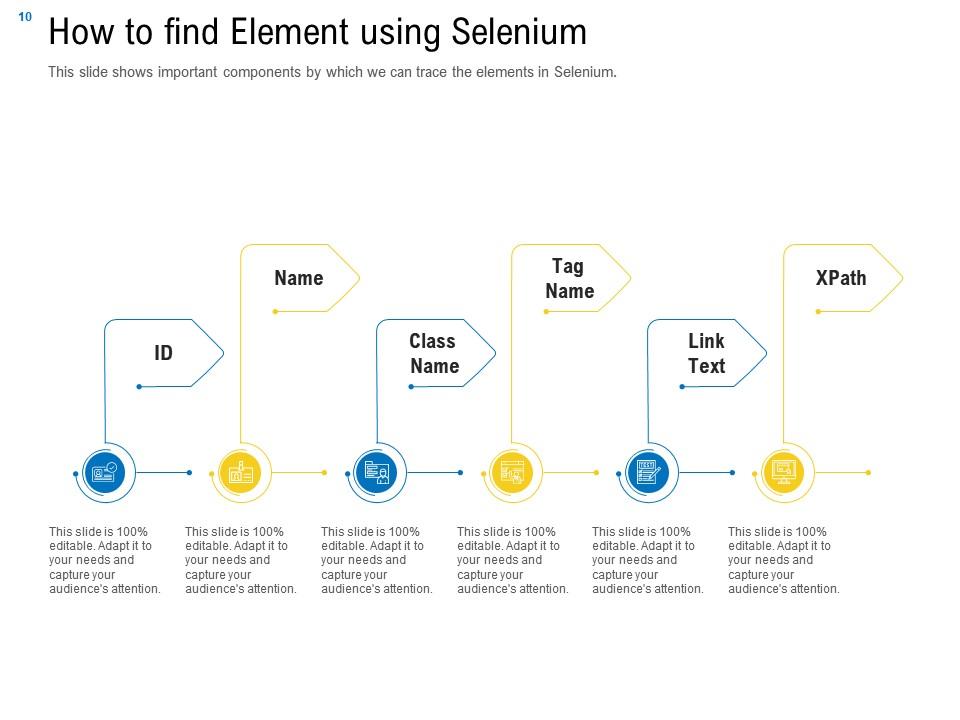
This template describes ways to locate elements inside web pages using Selenium, a test automation that is always evergreen. First, this article covers element properties such as ID and name, which uniquely identify an element on a page and reflect its name attribute, respectively. Furthermore, the class name and tag name assist in identifying components based on their class type or HTML tag type, respectively. Link text is highlighted, providing another way to locate hyperlinks on a webpage rapidly. Finally, the XPath locator technique is highlighted as robust enough to enable testers to navigate an HTML structure and accurately find items based on their connections inside a page.
Template 9- Different Types of Tests That Selenium supports
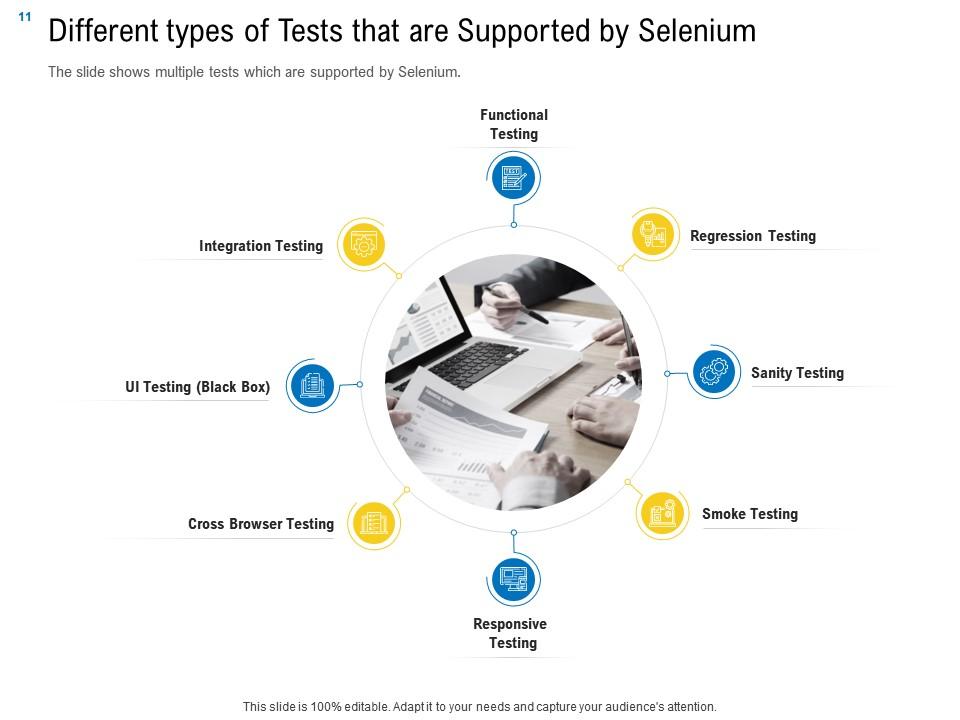
This template describes all of the tests supported by Selenium for software testing, covering a wide range of topics. Functional testing confirms that software works as intended and meets its requirements, while integration testing verifies that all separate components operate together cohesively.
Template 10 - Difference Between Borland Silk and Selenium
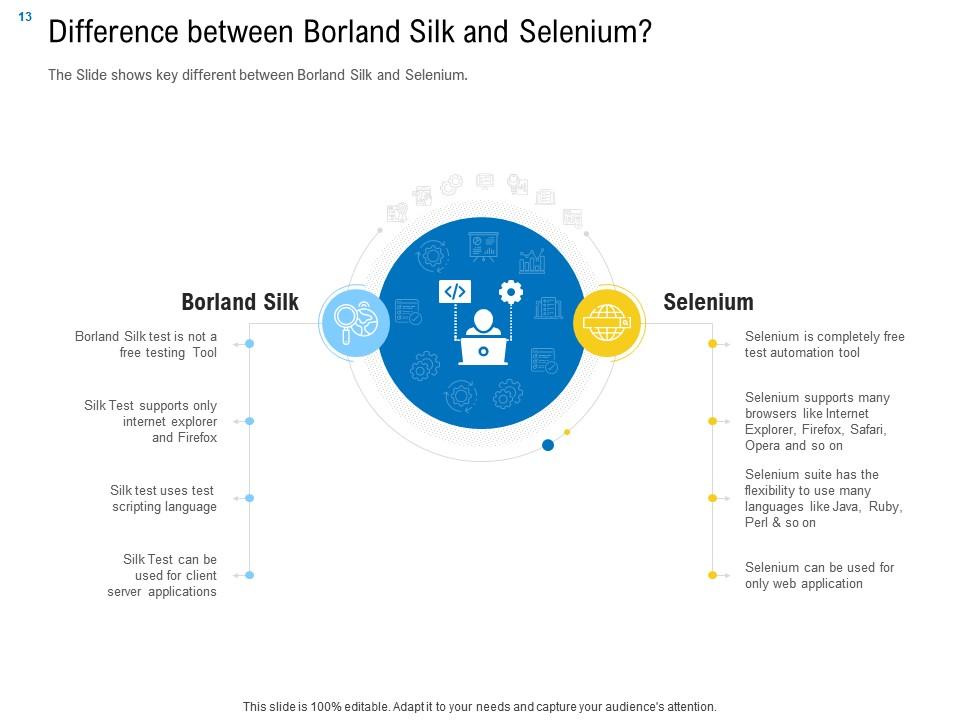
Use this presentation template to compare two test automation technologies, Borland Silk and Selenium. Five major variables or expected subheads are covered, which are features, functionality, simplicity of use, compatibility, and community support. The aim of the slide is to provide a comprehensive and understandable review of differences and common good points between Borland Silk and Selenium. This table is drawn up in a manner so that businesses can have an easy pick in deciding which best test automation solution.
*****
Realize the full potential of automation
Testing automation has been both exhilarating and instructive, as seen by the end of our PowerPoint presentation slides. With these slides in your arsenal, you now have all of the tools you need to teach people about Selenium test automation - whether they are on your team, customers, or stakeholders - therefore promoting more efficient and successful testing processes.
PS Check out the blog on Selenium Automation Powerpoint Slides to learn more.
Test automation with selenium powerpoint presentation slides with all 25 slides:
Use our Test Automation With Selenium Powerpoint Presentation Slides to effectively help you save your valuable time. They are readymade to fit into any presentation structure.
-
Out of the box and creative design.
-
Awesomely designed templates, Easy to understand.
-
Easily Editable.
-
Best way of representation of the topic.


